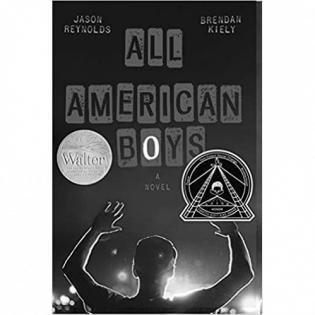All American Boys Literature Guide
Keywords:
Common Good
Empathy
Racism
Social Action
by Jason Reynolds and Brendan Kiely - A guide for parents, teens, teachers, and group leaders to accompany the reading of this young adult novel. The guide below provides discussion questions to analyze the important issues of racism and bias and bring out the themes related to identity, community, empathy, and generosity.
Written by two award-winning authors, "All American Boys" shares the alternating voices of two students, one black and one white, after Rashad was beaten by a police officer and Quinn saw it happen. The narrative reveals different experiences and perspectives of diverse kids when the incident challenges everyone to face their identity, values, and hidden biases. Young people can explore their own views on equity and injustices of any kind.
Discussion Questions
- What does it mean to be an "all American boy"? Typically people picture a young man who is athletic, smart, popular, and good looking. As you read, look for references to what it means to be American.
- Flip through the chapter titles and note the pattern you see. Why do you think it is set up this way?
- Is your high school ethnically diverse? Are there people with diverse abilities and strengths? Reflect on how different traits might appear to give some kids more worth while others are seen as less. Where does that false perception come from? Are some people actually more important or above others?
- How do you think Quinn's relationship with his little brother Will influences his decision to speak up?
- Read the passage describing the incident in Jerry's store from Rashad's point of view. Describe what happened in your own words.
- When Quinn was trying to understand the incident, he said Rashad was probably on drugs. English pointed out that Quinn was often on drugs. How is the "partying" perceived differently for white students and Black students? Why do you think some people wanted to believe Rashad was "on drugs"?
- Quinn and Jill had to go against their families to do what they believed was the right thing. In what ways was that an act of philanthropy? Philanthropy is giving your time, talent, or treasure and taking action for the common good.
- Reread the final scene when Berry reads aloud the names of the unarmed African Americans who were shot by police. How did you feel when she read those and some of the names that were familiar from the news? What action did it get you thinking about taking?
- Are there any characters who are older that surprised you with their actions and beliefs? What surprised you and why? What bias do you think we have about people over 50 years old?
Activities
- Research stories about unarmed African Americans who were shot. In what way were these people All American? In what cases did people talk about negative parts of their character as if it excused the killing?
- Make a diagram comparing decisions/actions that might benefit self/friends vs decisions/actions that might benefit the common good. Write a sentence describing how to balance these two things when they are opposed.
- Rashad admired cartoons with a simple family scene viewed in a circle. Draw a scene like that depicting a familiar interaction at school. Give it a caption. This may portray a truth that is hard to talk about or a funny interaction.
- Use this toolkit from Learning to Give to investigate the issue of equity and justice and prepare to take action.
